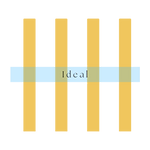
Important Hair Analysis Patterns
Through the 50+ years of work by Dr. Paul Eck and other brilliant researchers studying millions of hair mineral analysis tests, patterns have been identified that yield insights into health, disease, psychology, lifestyle, and the shifts required to achieve healing and higher functioning.
Listed here are some examples of meaningful patterns seen on a Hair Mineral Analysis. For a more extensive list, click here.
SYMPATHETIC
DOMINANCE
This pattern is very important if it shows up on a persons HTMA. It is called sympathetic dominance because a person with this pattern is overusing the sympathetic nervous system. This leads to blocked healing processes, detoxification, and a variety of symptoms.
Identified by a potassium level lower than 4.0 mg%.

HILL
PATTERN
The Hill pattern is a powerful indicator of deep healing and greater joy in one's life. Interestingly, one can feel like they got "over the hill," as in they overcame obstacles and now have achieved in a new height. This could be in health, or some other area of life.
Identified by higher magnesium & sodium.






